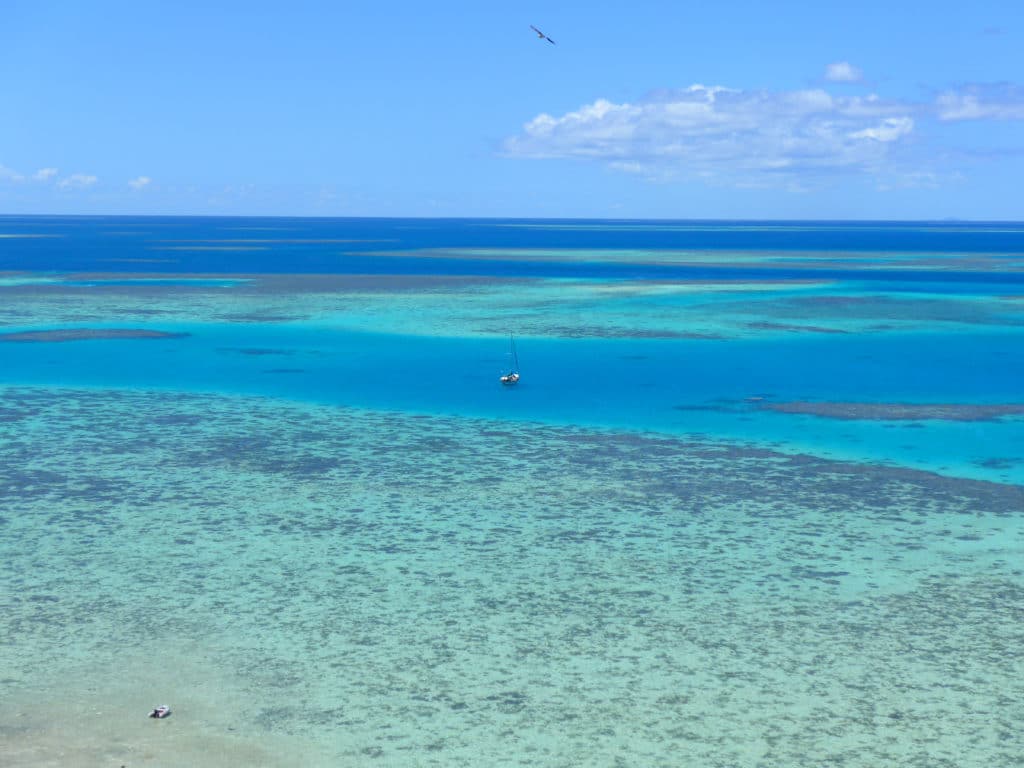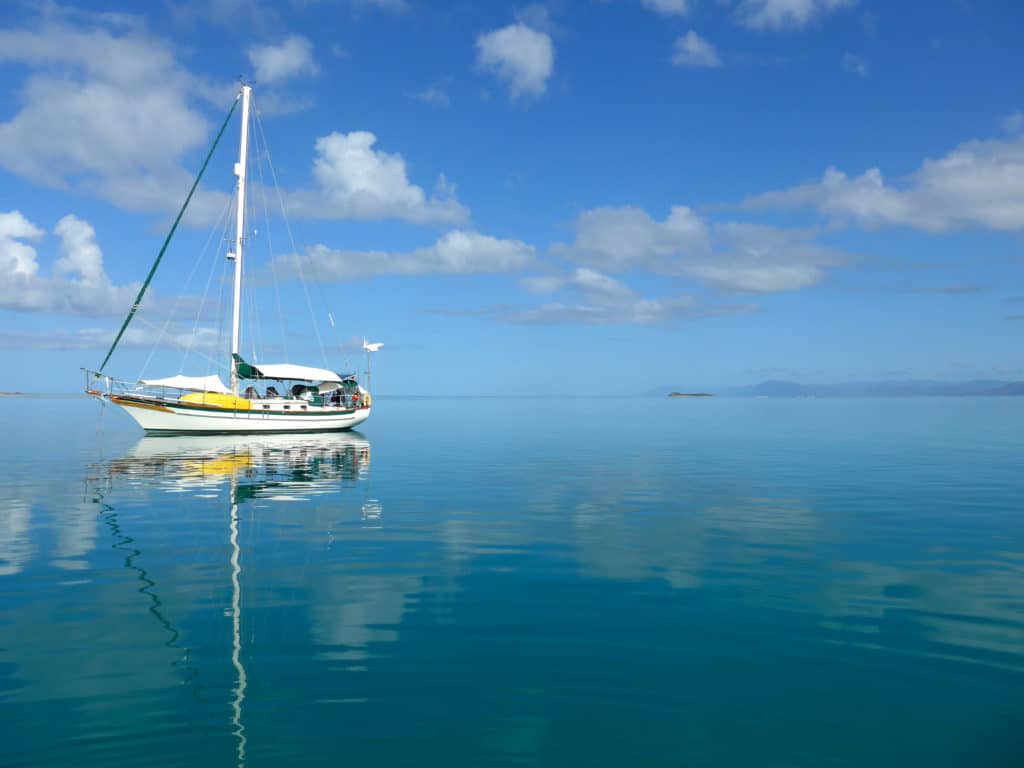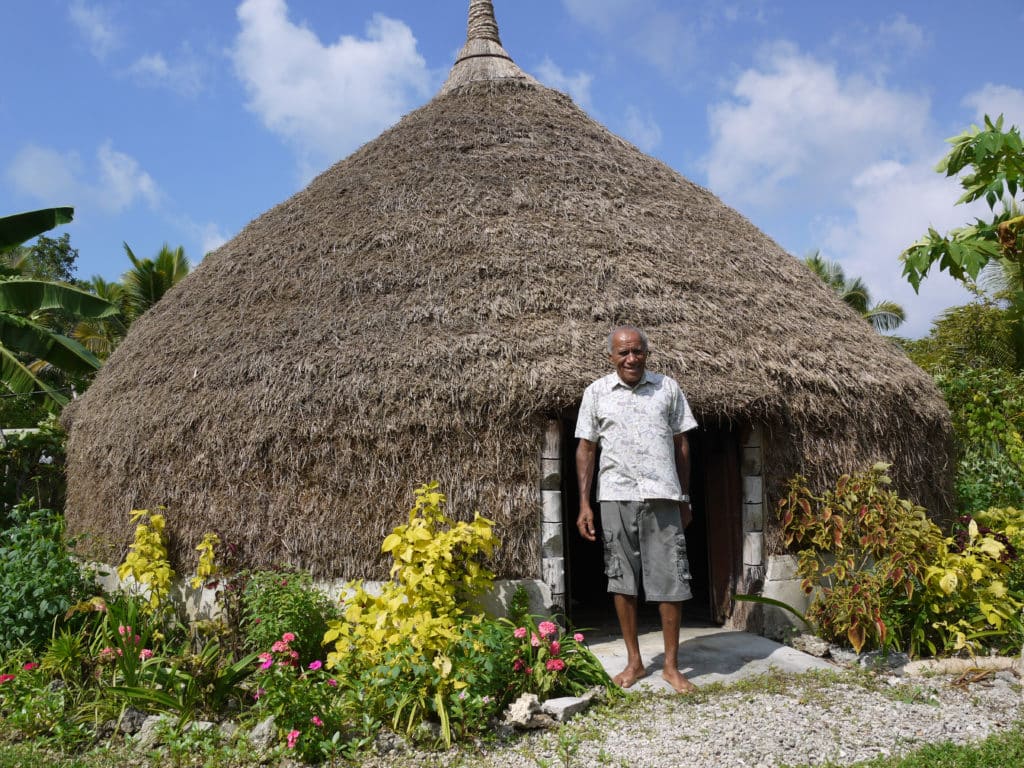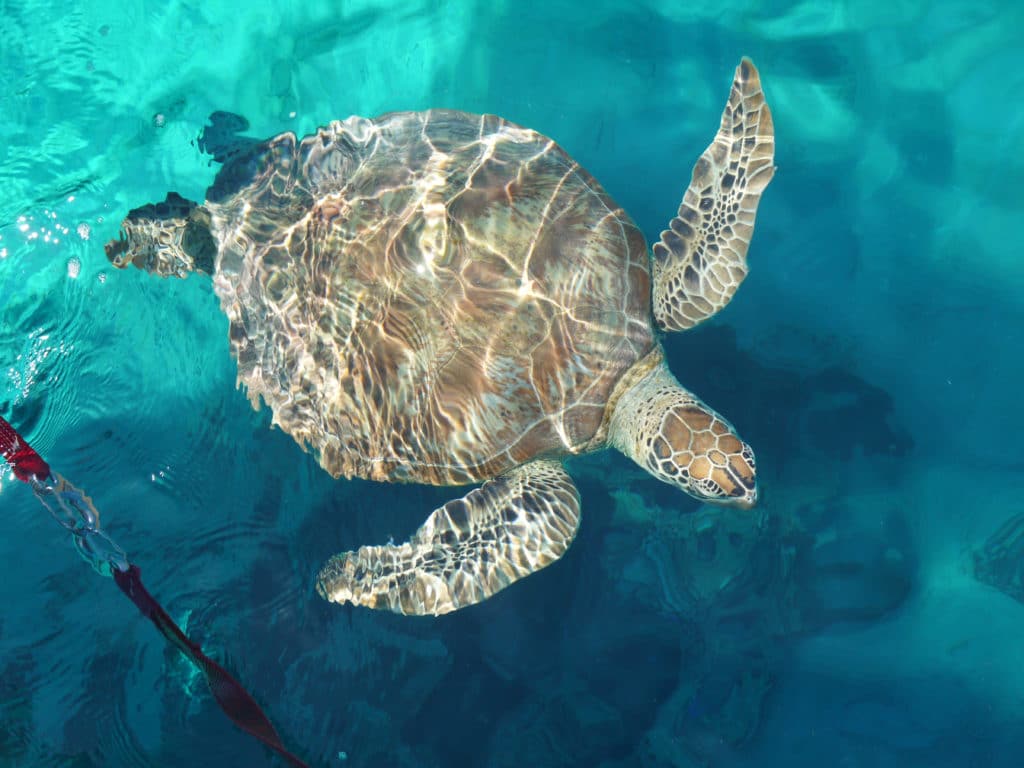
Almost everyone has heard of the legendary Tahiti and Bora Bora in Polynesia. Armchair sailors could find Fiji and Tonga in the South Pacific. New Zealand, well, that’s easy. But ask most people to pin New Caledonia on the globe and they wouldn’t know in which hemisphere to begin looking. Shortly after my wife, Catherine, and I arrived in the country, we telephoned our bank to reactivate an ATM card, and when hearing our location, the banking specialist sighed wistfully and shared, “Wow, New Caledonia, I’ve always wanted to go to Africa.”
The truth is before Catherine and I sailed Dream Time, our 1981 Cabo Rico 38, to New Caledonia we also knew little about the country. It was mentioned only vaguely by cruisers as a French territory in Melanesia and a convenient pit stop on the western side of the South Pacific milk run — a great place to buy baguettes and Bordeaux near the end of the cruising season. So when we arrived last year from New Zealand, after visiting nearby Norfolk Island and Vanuatu, we had planned to stay only a few months, long enough to see the highlights, fill our tanks with diesel and our bellies with French food before sailing across to Australia for cyclone season. But that was over a year ago, and we’re still here.
New Caledonia, we discovered, is the third largest island in the South Pacific, after Papua New Guinea and New Zealand; boasts the world’s largest lagoon, 13,000 shimmering square nautical miles, which in 2008 became a UNESCO Marine World Heritage Site; and is almost completely encircled by 800 nautical miles of pristine reef, the second longest after the Great Barrier. On our very first day in New Caledonia, escorted through Canal de la Havannah by humpback whales, we knew we had entered a cruising nirvana — a turquoise world saturated with diverse marine life, reefs, bays and uninhabited islands just waiting to be explored. This, we realized, was our kind of destination, and we set out to see it all.
For the first two months, we toured the southern lagoon, an area just 30 miles from Nouméa, the busy capital, but a region that felt utterly secluded. With an average depth of just 80 feet and protected from ocean swell, it’s home to a ridiculous number of coral reefs and perfectly formed sandy islands of various sizes, offering a variety of anchorages to satisfy every kind of cruising preference. The lagoon, a vast natural aquarium, was teeming with schools of colorful reef fish, healthy coral, turtles tame enough to float along our waterline, dugongs, dolphins and sea snakes. We arrived during migratory season, and humpback whales rolled gently alongside and — for a few white-knuckle seconds — right under our keel.
We selected the islands with the best launch beaches, and when the trade winds blew at 20 knots, we kitesurfed in shallow water over powdery sand. We anchored near the reef and dived through passes, accompanied by schools of sharks and giant manta rays. We explored World War II wrecks, and when distant low-pressure systems in the deep Tasman Sea sent heaving swells and surf cascading over the outer reef, we snorkeled, kayaked and spearfished farther inside the protected lagoon. On the glassy calm days, when sea and sky blended softly together, removing the horizon, we explored the lagoon’s extreme southern cul-de-sac, anchoring off islands that felt as remote and precious as the Tuamotus.

During a respite in the trade winds, we sailed farther south to Île des Pins, a quiet and idyllic cluster of islands that rests off the main island’s southern tip, forming the dot of New Caledonia’s exclamation mark. The islands were named by Capt. James Cook in 1774 for the towering native pines that guard the shoreline, believed by the locals to contain the spirits of departed ancestors. The Kanak culture still dominates the area, so many territories are keenly protected with tribal customs by the people who settled there more than 3,000 years ago. Even today, carved totems closely watch over bays where traditional pirogues, outrigger sailing canoes, glide across sacred turquoise waters in a lagoon where mushroom-shaped limestone islands balance on narrow bases eroded by centuries of passing tides.
We explored caves above and below the surface near Gadji, a shallow anchorage on Île des Pins’ northwestern corner, scuba diving through tight fractures under the reef, which opened magically to underwater cathedrals where blowholes in the limestone ceiling allowed shafts of flickering sunlight to dance on the seabed 30 feet below the surface. And pushed to the limits of comfort, we clawed deeper under the reef into pitch-black antechambers, where lobsters gathered in the hundreds on limestone shelves, probing the darkness with swaying antennas.
Days gently blurred into weeks, which somehow, too quickly, became months, and with cyclone season fast approaching we needed a safe haven. With help from the friendly staff at Port Moselle, one of the most protected marinas in downtown Nouméa, we reserved a slip for Dream Time on their visitor’s dock. To prepare for a named storm, we purchased 300 feet of cyclone line, which was secured to heavy chains buried at the bottom of the harbor. For five months Port Moselle Marina was our base camp, and all the conveniences and attractions of the tropical French capital were just a walk, bus or le Petit Train ride away. We visited the fruit, vegetable and craft markets, marine-supply stores, air-conditioned supermarkets and museums almost daily, and followed the fragrance of freshly baked croissant and espresso to countless patisseries nestled around Place des Cocotiers, a tropical square in the heart of the city.
In the middle of summer, we rented a car for three weeks to tour Grande Terre, the big island, driving more than 800 miles to every corner of the diverse and contrasting island. Across the lush, rolling grassy countryside of the west coast and over the dry, dusty red plains in the deep south, we weaved up and over the island’s spine, climbing more than 4,000 feet to a craggy wind-swept mountain range before descending into lush tropical valleys overgrown with giant ferns, pines and palms. We stopped frequently at rickety roadside stalls to buy locally grown bananas, lychees, grapefruit so sweet they rivaled even those from the Marquesas, and sticky homemade pineapple cake. In the far northeast, towering cliffs drop almost vertically to meet the lagoon, and when the road ended abruptly at the Ouaïéme River, a barge powered with just a 30 hp outboard ferried us and our car across so we could continue our journey north to the remote tip of the island, known as bout du monde: the end of the world.

But we preferred to spend our summer sailing and exploring the bays, coves and estuaries of Grande Terre. We visited the crumbling remains of penal colonies where more than 22,000 French convicts were extradited from 1864 to 1897 and, after serving their sentences, found themselves stranded on a remote island with no hope of returning home. We hiked through red rock canyons, anchored off black volcanic-sand shores, soaked in thermal pools and ventured into the deep waters of Baie du Prony, following the meandering estuary upstream to a hurricane hole so calm that Dream Time was connected to a perfect reflection of herself. And when cyclones developed with paths forecast to bring them into New Caledonian waters, close enough to raise the orange pré-alerte cyclonique flag, we sailed back to the shelter of Port Moselle Marina.
In May, when the trade winds felt cool rather than clammy and ocean temperatures dropped along with the humidity, we cleaned and coiled our cyclone lines, waved goodbye to new friends in Nouméa, and set off for Îles Loyauté, the Loyalty Islands. Just an overnight sail away, the traditional Kanak culture and village life on this chain of islands make you feel like you’ve arrived in a country different from the Francophone Grande Terre.
Almost all anchorages in the Loyalties are tribu, tribal lands passed down through generations. Custom dictates that visitors request an audience with the village chief when they first arrive and offer la coutume, a gift, traditionally a few meters of fabric and a 1,000 CFP note (about $10 USD). The monetary value is not measured; rather, it’s a humble gesture, one that shows respect and recognition that you are a guest in their land. To personalize our gifts, we also offered a Dream Time T-shirt and a warm, freshly baked coconut cake, and we always felt welcome.
We were invited inside traditional grande cases, the thatch huts used for tribal meetings and family sleeping quarters, where, sitting on woven mats around a fire pit, speaking limited French to a Melanesian chief, we somehow felt completely at home. We anchored off limestone cliffs where water visibility was 100 feet and stayed for weeks in Ouvéa, a shallow atoll framed with more than 15 miles of sweeping white-sand beaches, reputedly the most beautiful in the entire Pacific. It’s home to a Kanak population so proud and independent that local communities, valuing privacy over profit, chose to prohibit cruise ships from entering.
Since we sailed into New Caledonian waters over a year ago we’ve logged, remarkably, more than 1,500 nautical miles and visited more than four dozen anchorages in what has been some of the most diverse, relaxing, rewarding and convenient cruising we’ve experienced in over nine years of sailing. Navigational charts accurately detail every island, reef and passage. Food provisioning is among the best in the Pacific. If you need boat work, help finding the right mechanic or a customs extension, we had great experiences with Chloe Morin, a local yacht agent (noumeaocean.com) who handled every request with an ease and level of professionalism that guaranteed to make our stay a more enjoyable one.
But New Caledonia isn’t just restricted to cruisers who’ve crossed the Pacific. Local charter companies in Nouméa boast a shiny fleet of monohulls, catamarans and even a few powerboats that make this island paradise accessible to everyone. So, whether you seek adrenaline thrills on the water, diverse marine life under the surface, rich cultural exchanges, French cuisine or just an irresistible selection of blissfully remote anchorages, New Caledonia has it all, and it’s just waiting to be discovered.









